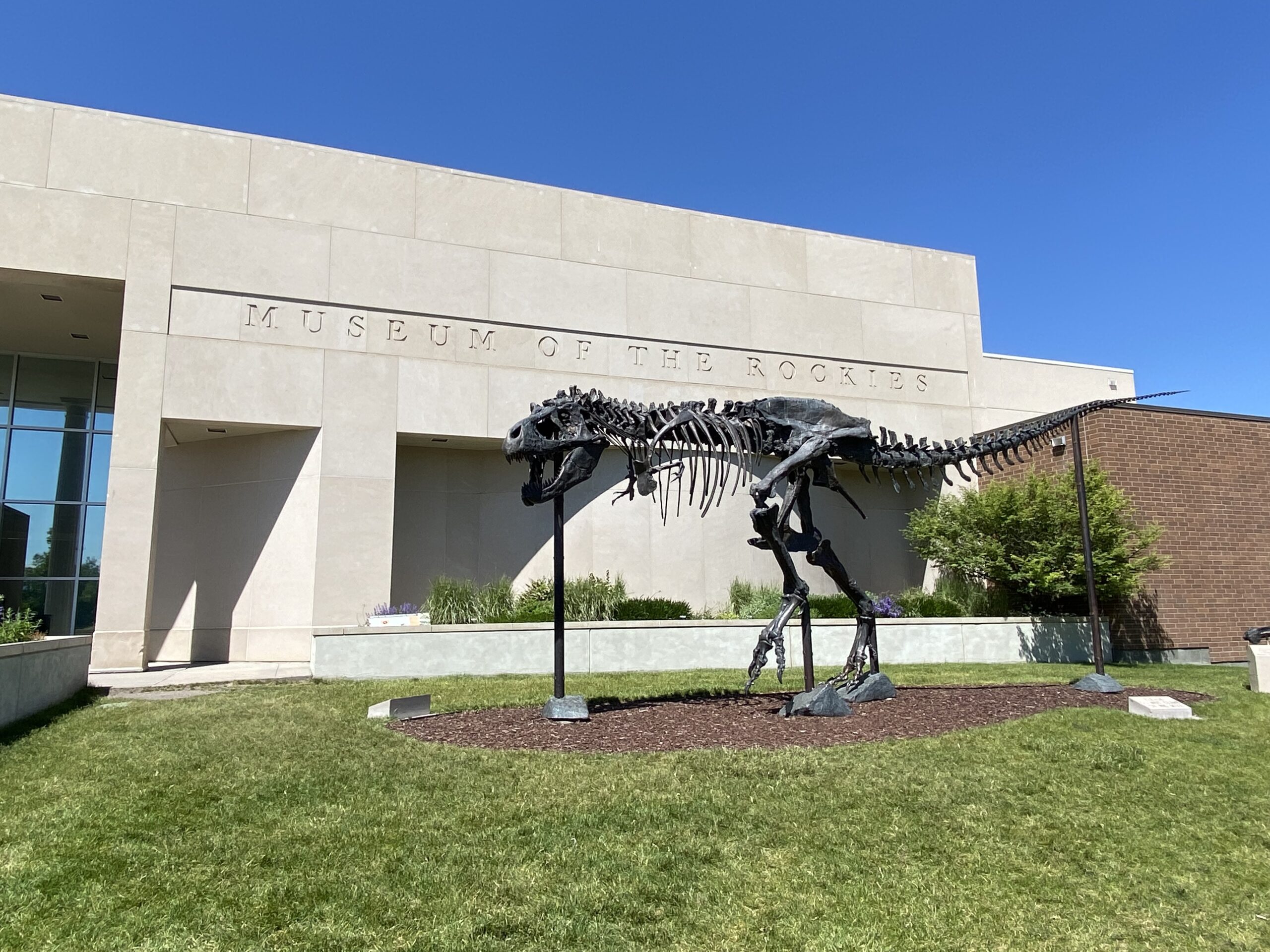After consecutive weeks in Grand Teton and Yellowstone, we were in need of some civilization and few days in Bozeman, Montana did the trick. We were able to do multiple loads of laundry, restock the fridge and catch up on emails and news.
Then we were able to enjoy the town a bit.
We stayed at the Gallatin County Fairgrounds, just a couple of blocks from Main Street. Bozeman reminded us a lot of what Bend, Oregon was like when we first moved there in 2004: a town of about 55,000 people, with good restaurants and breweries, and easy access to outdoor recreation.

The biggest draw in Bozeman is the Museum of the Rockies, and we could see why. Their dinosaur exhibit is one of the best we’ve ever seen. Lots of museums have a T-rex and a triceratops. MOTR, as it’s known, has an entire row of T-rex skulls and a display of triceratops skulls from infant through adulthood, showing how the head changed with age. It’s really a must-see for any dinosaur fan.

The next day I hiked Storm Castle Peak, a short hike about 45 minutes outside of Bozeman. The trail climbs steeply for 2.5 miles to nice viewpoint at the top. As I sat on the rocks at the summit, eating a granola bar, I felt something on my leg. I turned to see a chipmunk brazenly leaning on my leg hoping to get a crumb or two from my snack.

After lunch, we drove out to Madison Buffalo Jump State Park. Before Native Americans had horses and guns, they used sites like this to hunt buffalo. One brave member of the tribe would dress up in a buffalo robe and make noises imitating a hurt bison cub. As bison have poor eyesight, eventually one of the cows would go to investigate. Bison instinctively follow the leader, and soon they’d get the entire herd moving. The runner would lead the herd towards two lines of rocks that funneled the bison toward a large cliff. Other members of the tribe would hide behind the rocks and then pop out at the right time to scare the buffalo into a stampede. At the last second, the runner leading the bison would duck into a crag at the edge of the cliff, and it would be too late for the bison herd to stop. The animals would plummet over the cliff to their death. Below, other members of the tribe were waiting to kill the bison that survived the fall, and to process the animals for their meat and hides. No part of the animal went to waste.

There are few indications left at the site to suggest what went on there. There are some teepee rings where the Indians camped out, and researchers have excavated plenty of bison bones and tools from the area. Interpretive panels help visitors understand the entire process.

As in Missoula, Bozeman has a large “M” set out by students from Montana State University in white rocks on a hillside overlooking the city. On our final day in the city, I drove out to the M to give it the old college try. There are two paths to the top, one steeper and more direct, another longer but less steep. I went up the former and down the latter for a nice early morning workout.
After a few more errands, we went out to dinner at MAP Brewing Company, which is situated alongside a small lake with a beach. We ate and drank watching people paddle canoes, kayaks and stand-up paddle boards, as others played volleyball on the sand.
A few days in town were just what we needed to refresh and continue on our way.
Days: 152
Miles Traveled: 20,737
Next stop: Little Bighorn Battlefield National Monument


